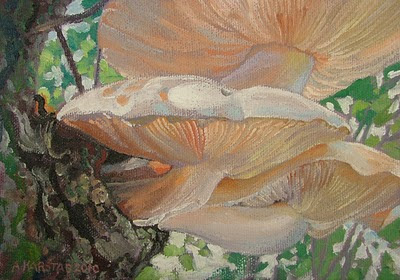Inspired By Emily Carr (oil on canvas 10 x 12 in.)

28 October finds me in Ottawa viewing "Winds of Heaven", a film by Michael Ostroff about the life and art of Emily Carr and the diminishing of the forests and the native peoples of the west coast of British Columbia. The film resonated with the Emily Carr I'm familiar with, and the reader of her journals and letters expressed all of her strength of character, humour, and frustration with those who wouldn't understand. The wealth of archival photos and old motion picture clips brought to life the time and place, especially the felling of the giants of the forest and native villages bristling with totem poles. The voice that played Emily Carr read my very favorite passage from her journals - the process of sitting and waiting quietly and patiently in the forest for all the details to come together into shapes and movements - for the forest to speak to the painter. Here is an image from my archives... On a sunny day in late September 2007 I sat on the ...







